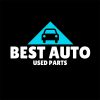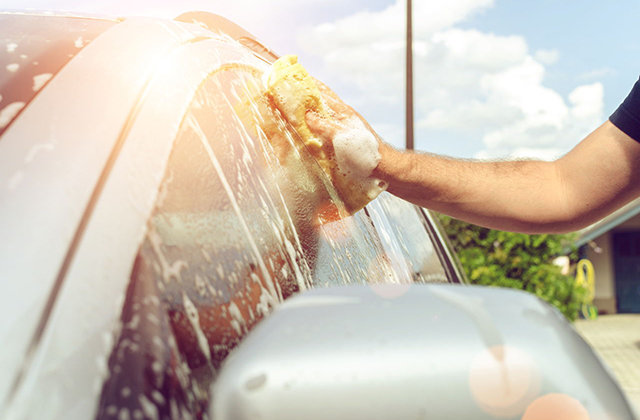Wheel woolies is the most effective way to clean vehicles wheels we have ever seen. When washing a vehicle, water is obviously the main constituent in the process and it is most commonly applied to the the vehicle using either a hosepipe or pressure washer. Both can be very effective at cleaning your car and rinsing away dirt and contaminants but in certain circumstances one may be more appropriate than the other, depending on your needs and the vehicles requirements. In reality, auto shops and auto-glass replacement vendors report no such problems with auto glass that has been cleaned by a window cleaner.
A hosepipe simply uses the standard flow of water from the tap to dispense it at the open end. There are a wide variety of hosepipe attachments and nozzles available that easily fix to the end of the pipe and help to increase the pressure of the water by affecting the spray pattern. This is also useful for different cleaning applications, for example you could have a light, wide shower type pattern which is useful for wetting large areas at once, a fan or angle pattern which gives a more controlled flow of water that is ideal for car washing, and even thin, strong jets or ‘pencil streams’ which can be used to direct water at stubborn areas of dirt and contaminants that would not normally be rinsed away.
One of the main disadvantages of using a hosepipe to clean your car though, is that you are ‘at the mercy’ of the water pressure from the tap and if it happens to dip, or generally be poor in your area you may not have ample cleaning power to effectively remove dirt and contaminants properly. Using a hosepipe instead of a pressure washer can however, sometimes be a slightly safer alternative as the water isn’t as likely to be driven into, and under sensitive areas and components like window seals, trim details, vents and electrical connections.
An increasing number of people are now choosing to use a pressure washer during their car washing routine. There are many different types of pressure washers ranging from domestic cold water units to large, hot water commercial machines, however they all work in fundamentally the same way. A hosepipe is connected to the input of the unit and the water is drawn through a pump to increase the velocity of the flow, the increased flow of water is then pumped out of the unit down a thinner hosepipe and through a narrow lance were it is finally dispensed through a specialized nozzle on the end to give a pressurized, yet controlled stream of water.
Pressure washers in general are more effective at cleaning and removing dirt and contaminants as the pressurized water effectively gets in behind stubborn dirt and contaminants and lifts them away quickly and efficiently. Pressure washers are especially good at thoroughly cleaning the wheels and wheel arches of a car, and for removing other ingrained contaminants such as algae, which makes them very useful for cleaning other vehicles like boats and motor homes. Even with the increased flow rate of the water, pressure washers use considerably less water than washing with an open hosepipe, so this helps to actually save you water and be more friendly to the environment in at the same time.
Pressure washers can be used in conjunction with high foaming lance attachments and chemical injection systems to provide you with the means to properly pre wash and soak your vehicle. This can considerably improve the car cleaning process, removing more contaminants before any contact washing, thus reducing damage infliction, and can also be a very useful feature for cleaning larger vehicles with high tops and hard to reach areas.
Due to the fact that the water is pressurized, some pressure washers do have the potential to inflict damage into, and around certain sensitive areas of a vehicle. If a very powerful machine is being used and the stream of water is held to close to the surface, the water can work its way into any weak points in the paintwork, such as rock chips or rust and make them worse by driving more moisture into the metal beneath of lifting the paintwork from the surface. When an appropriate machine is used in the correct manner however, there is little chance of it causing any damage, especially on a well kept vehicle in a good condition.
If you have a vehicle that is heavily used and requires regular washing and contaminant removal then an appropriate pressure washer would probably be the better choice, as long as it is used correctly. Take note if you have an older vehicle with sensitive areas, like a vintage car, or a fiber glass bodied caravan with perspex windows for example, or if your vehicle is simply not used allot and only sees light dirt and contamination, then a hosepipe, used in conjunction with a good quality multi-pattern, or adjustable nozzle would likely be more than ample for your cleaning needs.
When deciding whether to use a hosepipe or pressure washer to clean your car you should remember to consider the fact that most pressure washers can actually be used at a low pressure by simply removing the high pressure nozzle or part of the lance, or the hosepipe can simply be detached from the unit and be used for rinsing off more any sensitive areas, or for other cleaning duties around the home and garden, potentially giving you the best of both worlds.
For More Car Detailing Articles and to Discover how to Clean your Car to a Professional Standard Yourself, Visit Car Cleaning Guru Today.
Article Source: http://EzineArticles.com/expert/Joe_Mcdonald/600915
Article Source: http://EzineArticles.com/5997216

